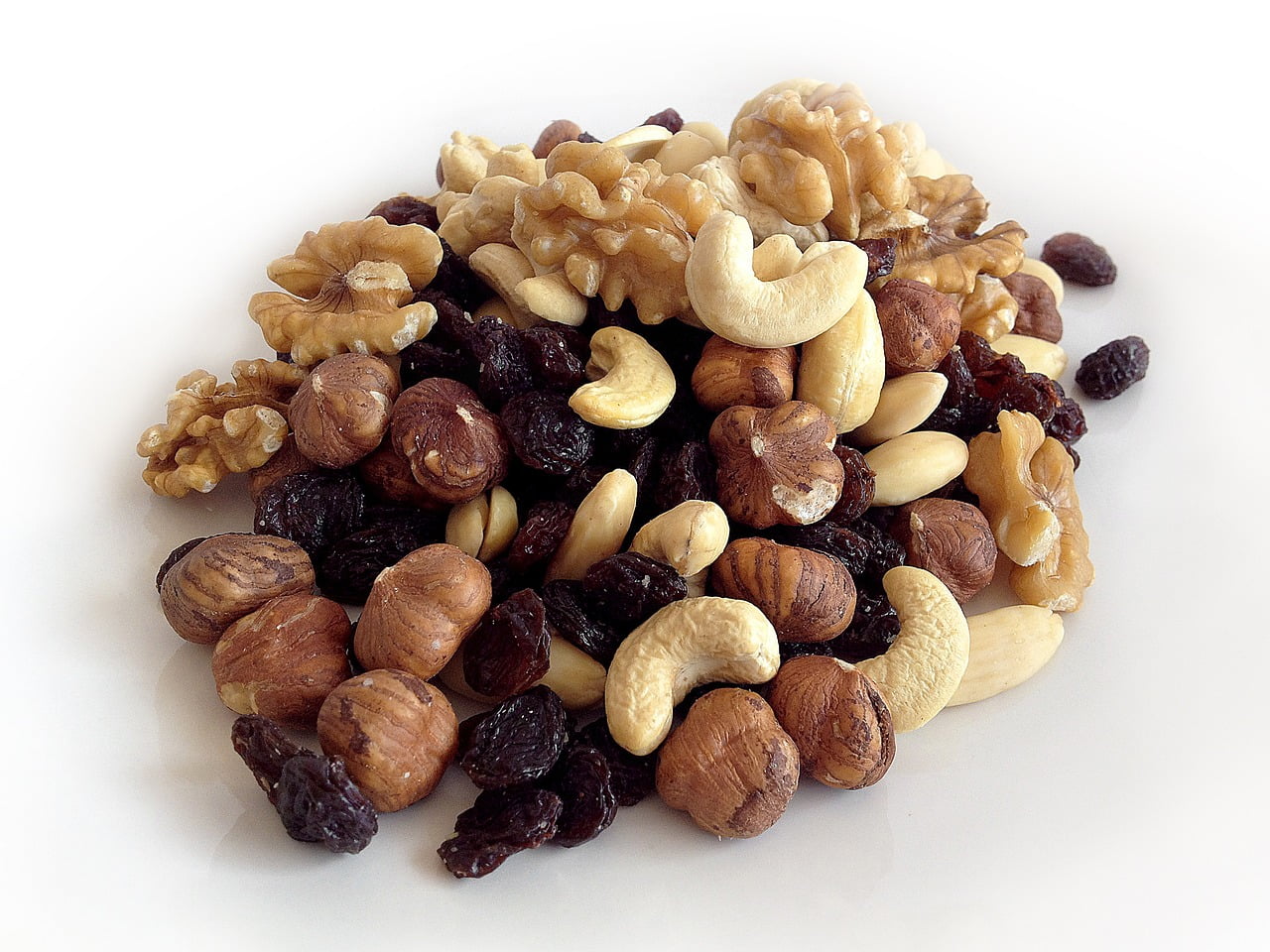Almonds and Walnuts for Health In a world of dietary trends and ever-changing health advice, some nutritional powerhouses have stood the test of time. Nuts, with their timeless appeal and remarkable health benefits, have earned a place of honor in the realm of wholesome foods. Among the array of nuts, almonds, walnuts, and pistachios shine brightly, offering not only delectable flavors but also a treasure trove of nutrients that contribute to overall well-being. This article embarks on a journey to uncover the hidden potential and science-backed advantages of these nutty delights, exploring their impact on heart health, brain function, weight management, and beyond.
Almonds: A Heart-Healthy Marvel
The Nutrient-Rich Profile
Almonds (Prunus dulcis) are heralded as nutritional powerhouses. A handful of these oval wonders is a source of abundant monounsaturated fats, which play a pivotal role in supporting cardiovascular health. Rich in vitamin E, almonds act as potent antioxidants, safeguarding cells against oxidative stress and contributing to overall vitality.
Championing Heart Health
The monounsaturated fats found in almonds are renowned for their heart-protective effects. Delving into the science, we explore how these healthy fats lower LDL cholesterol levels, reduce inflammation, and promote optimal heart function.
Fueling with Fiber and Protein
Almonds also emerge as a substantial source of dietary fiber and plant-based protein. The article delves into the role of fiber in digestion and blood sugar regulation, shedding light on how these attributes can support a balanced diet.
Practical Tip
Almond-Infused Meals Incorporate sliced almonds into your morning oatmeal or mix them into yogurt for added crunch and nutritional value. Consider using almond flour as a gluten-free alternative in baking recipes, providing a nutrient boost to your favorite treats.
Walnuts: Brain-Boosting Elegance
The Omega-3 Connection
Walnuts (Juglans regia), with their intricate brain-like folds, are a feast for both the eyes and the mind. A closer look at the omega-3 fatty acids within reveals a significant connection to brain health. Through exploring the scientific landscape, we uncover how these healthy fats contribute to cognitive function, mood regulation, and potential protection against neurodegenerative disorders.
Polyphenols and Antioxidants
Delving into the lesser-known aspects, we unravel the presence of polyphenols and antioxidants in walnuts. These compounds hold the potential to shield brain cells from oxidative stress, supporting mental acuity and overall brain well-being.
Practical Tip
Nutty Brain Boost Create a trail mix featuring walnuts, dried fruits, and a sprinkle of dark chocolate for a snack that nourishes both your brain and your taste buds. Incorporate walnuts into your salads or use them as a flavorful crust for baked fish or chicken dishes.
Pistachios: Nutrient-Rich and Weight-Friendly
The Weight Management Ally
Pistachios (Pistacia vera) step onto the stage with a unique proposition: a lower calorie count among nuts. As we explore the science, we delve into the ways pistachios can support weight management goals. The act of shelling these little green gems encourages mindful eating, contributing to a greater sense of satiety.
Potassium Powerhouse
A deeper look into the mineral content of pistachios reveals a significant presence of potassium. We examine the role of potassium in maintaining fluid balance, regulating blood pressure, and supporting overall heart health.
Eyeing the Antioxidants
The article turns its focus to the lesser-discussed antioxidants in pistachios-lutein and zeaxanthin. With a thorough investigation, we shed light on how these antioxidants bolster eye health, potentially mitigating the risk of age-related macular degeneration.
Practical Tip
Mindful Munching To embrace mindful eating, opt for in-shell pistachios. The act of shelling each nut encourages slower consumption, giving your body ample time to register satiety. Add chopped pistachios to your morning yogurt or blend them into smoothies for an extra nutritional kick.
Incorporating Nuts into Your Diet: Practical Tips
Snack Smart, Snack Nutty
Practicality takes center stage as we offer readers actionable strategies for incorporating almonds, walnuts, and pistachios into their daily routines. We explore the idea of portion-controlled snacking and provide tips for pre-packaging nut servings.
Breakfast Brilliance
The article transitions to breakfast, suggesting creative ways to infuse morning meals with the goodness of nuts. From nut-topped oatmeal to yogurt parfaits, we provide inspiration for starting the day on a nutrient-rich note.
Nut Butters and Beyond
The versatility of nut butters becomes the focal point, with discussions on how almond, walnut, and pistachio butters can elevate dishes. We offer insights into their use as spreads, dips, and versatile ingredients in both sweet and savory recipes.
From Salads to Sweets
The exploration continues as we uncover ways to enhance salads, baked goods, and trail mixes with the inclusion of nuts. Readers gain insights into the art of balancing flavors and textures while amplifying nutritional content.
The Nutty Trio: A Path to Wellness
The Sum of Parts
With the knowledge of almonds, walnuts, and pistachios in hand, we bring together the cumulative benefits of these nutty delights. The article emphasizes the importance of variety in nut consumption and highlights the potential for comprehensive health enhancement.
Challenges and Considerations
Acknowledging potential concerns, we address matters such as portion control, potential allergic reactions, and interactions with certain dietary patterns.
The Culmination of Health
Incorporating almonds, walnuts, and pistachios into your diet provides a delightful and wholesome way to care for your body. These nuts exemplify the beauty of natural foods that not only satisfy our taste buds but also nurture our well-being.
Final Thoughts
In the closing section, we revisit the concept of “Nutty Delights” as a metaphor for nature’s generosity. The article concludes with a call to action, inviting readers to embrace these nutritional gems as a means of cultivating a holistic sense of well-being.
FAQ-
1. Why are almonds, walnuts, and pistachios considered healthy nuts?
Almonds, walnuts, and pistachios are renowned for their impressive nutritional profiles. They are rich in heart-healthy fats, such as monounsaturated fats and omega-3 fatty acids, which contribute to cardiovascular well-being. These nuts also contain an array of vitamins, minerals, and antioxidants that support various aspects of health, from brain function to weight management.
2. How do these nuts contribute to heart health?
Almonds, walnuts, and pistachios contain nutrients that have been associated with heart health. Almonds, for example, are high in monounsaturated fats that can help lower LDL cholesterol levels. Walnuts are rich in ALA omega-3 fatty acids, which have anti-inflammatory properties beneficial for heart health. Pistachios, with their combination of healthy fats, protein, and fiber, may contribute to maintaining healthy blood pressure levels.
3. Can consuming these nuts improve brain function?
Yes, these nuts are linked to cognitive benefits. Walnuts, in particular, stand out due to their omega-3 fatty acid content, which supports brain health and may help prevent cognitive decline. Antioxidants in walnuts and other nuts also play a role in protecting brain cells from oxidative stress.
4. Are these nuts suitable for weight management?
Despite their calorie density, almonds, walnuts, and pistachios can be valuable tools for weight management. Their combination of healthy fats, protein, and fiber promotes satiety and helps control hunger. Pistachios, in particular, are known for their mindful eating potential, as shelling them can slow down consumption.
5. How can I incorporate these nuts into my diet?
There are numerous ways to enjoy these nuts:
- Snack on a handful of raw or roasted nuts.
- Add chopped nuts to yogurt, oatmeal, or salads for extra texture and flavor.
- Use nut butters as spreads or in smoothies.
- Incorporate nuts into baking, cooking, or trail mix for a nutritious boost.
6. Are there any considerations for allergies or overconsumption?
While these nuts offer remarkable health benefits, it’s essential to be mindful of allergies, especially among children. If you have known allergies, consult a healthcare professional before introducing new nuts into your diet. Additionally, due to their calorie content, portion control is crucial to avoid excessive calorie intake. Moderation is key to reaping the benefits without overindulgence.























